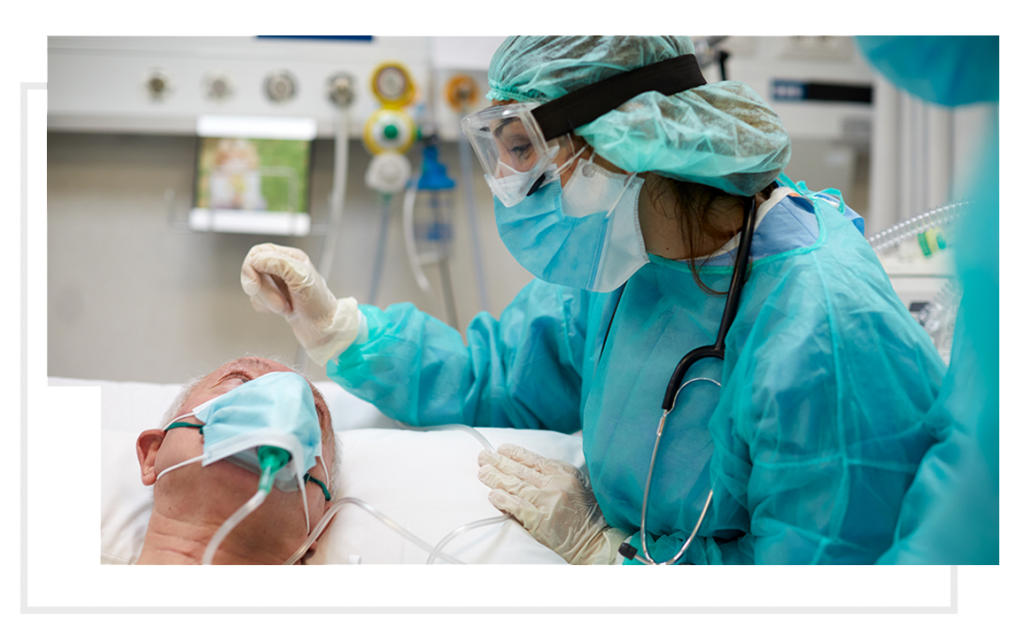
The COVID-19 pandemic disrupted life around the world in an unprecedented way. Explore some of the world-class research that has been conducted over the last two years by scientists who are leading the charge to eradicate COVID-19.
Read this to understand how a multicentric prospective observational study that included 21 ICUs in France and Belgium was used to identify three clinical phenotypes, their evolutions, and any comorbidities related to certain phenotypes. Local investigators filled out an eCRF to collect data (demographics, medical history) with the help of Castor EDC.

The existence of several phenotypes in COVID-19 related acute respiratory distress syndrome is unknown. Sought to identify different phenotypes of patients with moderate to severe ARDS related to COVID-19.
Inclusion criteria for participants was…
Conducted an observational study of 416 COVID-19 patients with moderate to severe ARDS at 21 intensive care units in Belgium and France. The primary outcome was day-28 ventilatory free days. Secondary outcomes were mortality on day 28, acute kidney injury, acute cardiac injury, pulmonary embolism, and deep venous thrombosis. Multiple factor analysis and hierarchical classification on principal components were performed to distinguish different clinical phenotypes.
Identified three different phenotypes in the patient cohort. Phenotype 3 was characterized by short evolution, severe hypoxemia, and old comorbid patients. Phenotype 1 was mainly characterized by the absence of comorbidities, relatively high compliance, and long duration of symptoms, whereas phenotype 2 was characterized by female sex, and the presence of mild comorbidities such as uncomplicated diabetes or chronic hypertension. Phenotype 3 was associated with higher mortality compared to phenotypes 1 and 2.
In COVID-19 patients with moderate to severe ARDS, we identified three clinical phenotypes. One of these included older people with comorbidities who had a fulminant course of disease with poor prognosis.
Read this to understand this prospective longitudinal study determined that components of the complement system might act as potential markers for disease severity and as therapeutic targets for COVID-19. All Clinical data and laboratory results were recorded in electronic case report forms, Castor EDC.

The complement system is an important component of innate immunity and can stimulate inflammation, this study is designed to determine its role versus COVID-19.
Participants were patients with polymerase chain reaction–proved or presumed SARS-CoV-2 infection admitted to a tertiary care hospital in the Netherlands between March and April.
A prospective, longitudinal, single center study was performed in hospitalized patients with COVID-19. Plasma concentrations of complement factors C3a, C3c, and terminal complement complex (TCC) were assessed at baseline and during hospital admission. In parallel, routine laboratory and clinical parameters were collected from medical files and analyzed.
Complement factors C3a, C3c, and TCC were significantly increased in plasma of patients with COVID-19 compared with healthy controls (P < .05). These complement factors were especially elevated in intensive care unit patients during the entire disease course (P < .005 for C3a and TCC). More intense complement activation was observed in patients who died and in those with thromboembolic events.
Patients with COVID-19 demonstrate activation of the complement system, which is related to disease severity. This pathway may be involved in the dysregulated proinflammatory response associated with increased mortality rate and thromboembolic complications. Components of the complement system might have potential as prognostic markers for disease severity and as therapeutic targets in COVID-19.
Read this to understand the observational analysis of how the SARS-CoV-2 pandemic impacted the mental health and health-related quality of life for not only COVID-19 and ICU patients, but non-COVID-19 and non-ICU patients as well. All data was gathered using the ISARIC and Franciscus Corona Registry in Castor’s Electronic Data Capture.

This single-center, observational study was used to determine the impact of hospitalization during the SARS-CoV-2 pandemic on psychological well-being and health-related quality of life after discharge from the hospital.
294 of 622 eligible patients participated in this study, with a median age of 64 years old and 36% female.
Patients were stratified based on SARS-CoV-2 PCR results and the necessity for ICU treatment. The primary outcome was psychological distress, expressed as symptoms of post-traumatic stress disorder (PTSD), anxiety, and depression, up to three months post-discharge. Health-related quality of life (HRQoL) was the secondary outcome.
Of the 294 patients participating in the study, 16% and 13% of these patients reported probable PTSD, 29% and 20% probable anxiety, and 32% and 24% probable depression at one and three months after hospital discharge, respectively. ICU patients reported less frequently probable depression, but no differences were found in PTSD, anxiety, or overall HRQoL. COVID-19 patients had a worse physical quality of life one month after discharge, and ICU patients reported a better mental quality of life three months after discharge.
These results demonstrated that COVID-19 suspected patients hospitalized during the pandemic frequently suffer from psychological distress and poor health-related quality of life after hospital discharge. Non-COVID-19 and non-ICU patients appear to be at least as affected as COVID-19 and ICU patients.
SUCCESS

US HQ
175 Varick St.
Ground Floor
New York, NY 10014
USA

EU HQ
George Westinghousestraat 2
1079BA, Amsterdam
The Netherlands
US HQ
175 Varick St.
Ground Floor
New York, NY 10014
USA
EU HQ
George Westinghousestraat 2
1079BA, Amsterdam
The Netherlands